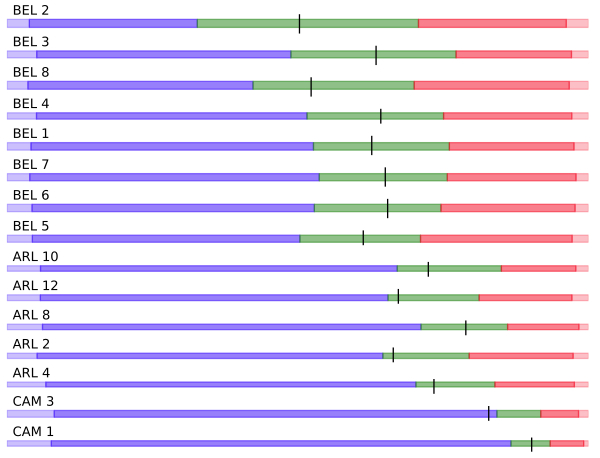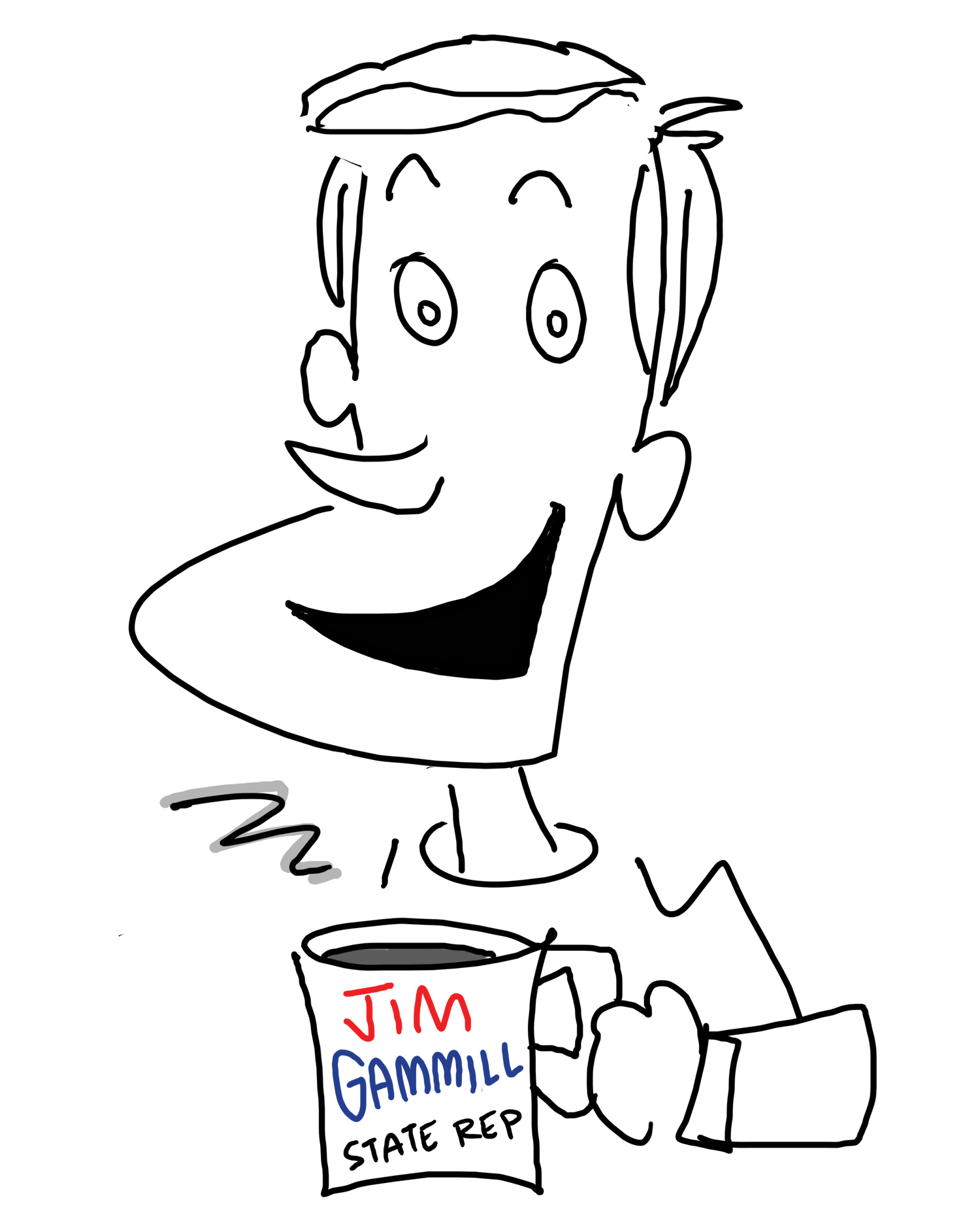Campaign Wrap Up

The Message
From the start, the two themes of the campaign were a declared independence from the two political parties and a sense of urgency to be realistic about our state and local governments' long term financial prospects.
The "independence" message had immediate and strong appeal for a sizable block of voters. For them, it was self-explanatory and clearly differentiated me from the two party candidates.
However, for the many voters who did not have a strong immediate -- almost visceral -- positive response, the two party candidates did a good job of blunting and co-opting our independent message, playing down their party affiliations and using language in the general election very similar to the message and language we had set out in the summer.
The "fiscal realism" similarly had a strong appeal to a set of voters, and it was easier to keep this message as our own -- neither one of the two party candidates seemed eager to put "everything" on the table, including tax hikes and structural changes to public sector pension and long term benefit plans. In the closing weeks of the campaign, I kept the focus on the tens of billions of dollars of unfunded liabilities, and the other two candidates chose not to engage on this issue.
In retrospect, I am comfortable with the message and theme of the campaign. It did attract a significant and distinctive base of support, and it did present an alternative to the two party candidates. The difficulty in winning the election I think had more to do with the organizational challenges of running as an independent as opposed to the campaign message itself.
The Results
The election results suggest that the message of party independence and fiscal reality did appeal to a significant number of voters. We pulled 22% of the vote in a heavily Democratic district, and ran ahead of the Republican. But I needed twice as many votes to win. In the context of the most expensive Senate race in the country in 2012, I needed to convince Warren voters and Brown voters to vote against their parties' candidates for the State Rep race. In hindsight, the biggest challenge was that many voters whose interest in voting was fueled by the Senate race had low levels of awareness of the State Rep race, and thus either skipped the race on the ballot or voted a straight party ticket.
(There were 1818 voters who cast ballots for the Senate race who skipped the State Rep race. In the Senate race itself, only 160 participating voters skipped that race.)
Here is a graph that shows how the State Representative race compares with the US Senate race in November 2012:

This graph shows that my support came from both sides of the partisan divide. We were a broad coalition, politically, and we did welcome Warren supporters and Brown supporters to our campaign. While we didn't get the numbers we needed, we did show that there is some appetite for an independent approach.
Here is the same visual story told on a precinct by precinct basis, arrayed in order of my percentage share of the vote.

I did best in Belmont, and my home precinct is at the top of the list. (And Tomi Olson, the Republican candidate, had her biggest margin over me in precinct 5, her home precinct.) In all the Belmont precincts I had voters from both sides of the Senate race cross party lines to vote for me.
In Arlington, it was challenging to get the attention of the Democratic party establishment. We chose to target those who were open to independent challenges of the status quo, and that accounts for the pro-Brown tilt of my likely voters.
Cambridge is home to Dave Rogers, and he did extremely well there, evidently winning some Brown voters or keeping the number of Warren voters who skipped the race down to a bare minimum (or both).
Campaigning and Campaign Operations
There's nothing like actually doing something to find out how hard it is. Plenty of friends and advisors had laid out for me the challenges of running as an independent last spring, and I know I listened well and had a good appreciation for that.
I'm glad I ran, if for no other reason than to better understand the difference between being a candidate and a campaign worker. I liked the ultimate responsibility for the campaign that comes with being the candidate. I am also very glad that I was able to bring Kathryn Alexander on board as a full-time campaign manager, and with a few exceptions in the technology area, I was able to let go of most non-candidate tasks. I can't imagine having a better working relationship with any other campaign manager.
The necessary public presentation of a candidate's self and family is undoubtedly always a challenge to some extent. I am so grateful for my own family's full embrace of this campaign and all it asked of them.
Not surprisingly, I found that I liked the door-to-door campaigning best of all, and the time in the television studios the least. Particularly since we were presenting a different kind of message to the voters, the chance to get immediate feedback was particularly helpful.
Like most independent campaigns, our campaign started from scratch. There was no party brand or infrastructure to use as a platform. We built it along the way, with all the stops and starts that go with any green fields project. This created inefficiencies, in terms of time and money, relative to the campaigns of the other candidates.
Despite these hurdles, we were able to build a viable campaign organization. We contacted many thousands of voters through our canvassing and phone banking efforts. We used voter history data to target those who were more likely to be open to an independent candidacy, and we successfully convinced many of them, one by one, to support us. I know we worked hard for each one of our 4862 votes.
Our headquarters space in Belmont Center was worth the expense. Not only did it provide us the necessary space for our activities, but it gave us visibility and routine contact with voters in a way that would have been very hard to replicate elsewhere.
Our media and communications strategies taught us some important lessons. It's nice to know how well our logo and print materials were received, with credit due to Kayla Schwartz, our graphic designer. Writing the case for the independent candidacy took more time and effort than I first expected, and that also reflects the challenge of building a campaign from scratch, without a party platform in place.
We devoted considerable time and resources to social media channels, but it was harder than I had expected to connect this effort to our voter identification efforts. We could have spent more time and resources on more traditional P.R. efforts, especially in Arlington and Cambridge given the absence of effort by the League of Women Voters and other non-partisan institutions and press to bring attention to our race in those towns.
All in all, we had hundreds of people actively involved in the campaign. Some were seasoned campaign workers, often splitting time between our campaign and either the senate or presidential race. But for many others, it was a new experience, and we all learned something new about politics and independent campaigns as a result. I cannot fully express how much I appreciate all of the hard work put into this campaign. Thank you so much.
Going Forward
So where do we go from here? Overall, I am optimistic about the message and the course of political action. As I said during the campaign, voters have already moved away from the rigid confines of the two parties -- it's our political process that needs to catch up.
Running in a year where there was such a high profile contest with huge partisan implications on the federal level -- the Brown-Warren race -- presented probably the least favorable environment for an independent candidacy. If so, then our showing should be quite encouraging.
One of the reasons I pursued this independent candidacy is that here in Massachusetts we have very few competitive races, particularly against incumbents. In this year alone, more than half of the state representatives faced no challenger, neither in a primary nor in the general election. I find this perhaps the most distressing fact of all, and I hope that I can encourage others to run, either in a primary or as an independent, in all parts of the state so that we can have many more competitive legislative contests.
As of this writing, in January 2013, there is no shortage of races on the horizon. There are already two vacant State Rep special elections scheduled, a US Senate race likely, and possibly a Congressional vacancy upcoming. In 2014, there will be open contests most likely for governor, lieutenant governor, treasurer, and Middlesex district attorney. The challenge is convincing people to make serious, competitive runs for these offices and offering the voters true alternatives.
At the same time, there are important items facing the Massachusetts Legislature this year. In addition to the annual budget, the legislature needs to consider our public transportation infrastructure, retirement health insurance plans for government workers, implementation of last year's health care financing law, among many other topics. There is plenty to do, even for those of us who are not members of the legislature. I encourage everyone to find some time to get involved and help find some practical solutions to these pressing challenges.
Once again, in wrapping up the 2012 race for State Rep, I appreciate all the time and attention so many people gave to the race this year. I hope you found it invigorating and that we find new ways to work together again.
All my best wishes,
Jim Gammill
